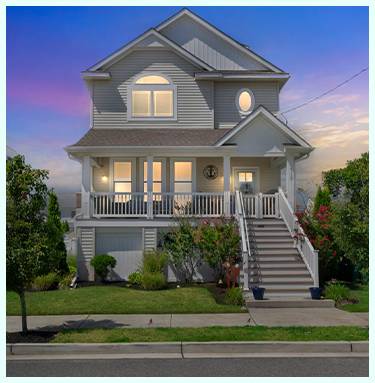Color in real estate photography can make or break a listing. As photographers, we’ve all encountered those tricky lighting situations – the warm glow of incandescent bulbs clashing with cool daylight, or the strange tints that some wall colors can cast across a room. It’s our job to navigate these challenges and deliver images that represent spaces accurately.
But here’s the thing: consistent color correction isn’t just about making pretty real estate photos. It’s about building trust with clients and potential buyers. When colors are true to life across an entire property listing, it creates a cohesive, professional impression that reflects well on both you and your client.
In this article, we’re going to explore practical color correction techniques for achieving true-to-life real estate photos. Whether you’re dealing with mixed lighting, challenging wall colors, or simply trying to maintain a coherent look across different properties, we’ve got you covered.
Why Color Correction Matters in Real Estate Photography
Accurate color representation is essential in real estate photography for several reasons:
- It provides a true-to-life representation of the property: Potential buyers rely on photos to get their first impression of a property. When colors are accurate, it gives viewers a realistic sense of the space, helping them visualize themselves in the home. This authenticity leads to more serious inquiries.
- It maintains consistency across a set of listing photos: A cohesive color palette throughout a photo set creates a professional, polished look. This consistency makes the listing more appealing and easier to navigate, keeping potential buyers engaged as they scroll through images.
- It enhances the overall appeal of the space: Proper color correction can bring out the best in a property. It can make spaces appear brighter, more inviting, and well-maintained. This enhanced appeal can result in increased interest and potentially drive real estate sales.
- It helps potential buyers make informed decisions: Accurate colors allow buyers to better assess important details like the condition of walls, flooring, and fixtures. This information is crucial for buyers in making decisions about whether to view or purchase a property, especially if they are purchasing it site unseen.
- It showcases the property’s unique features: Correct color representation can highlight special features of a home, such as custom paint colors, unique materials, or design trends. These elements might be lost or misrepresented with poor color correction.
- It reduces the risk of disappointment during in-person viewings: When online photos accurately represent a property’s colors, there’s less chance of buyers feeling misled when they view the property in person. This alignment of expectations can lead to more productive viewings and satisfied clients.
- It demonstrates the photographer’s and realtor’s professionalism: As noted, high-quality, color-accurate photos reflect well on both the photographer and the real estate agent. It shows attention to detail and a commitment to presenting properties in the best possible light.
Let’s dive into some effective color correction techniques:
Understanding the importance of color correction is the first step; now, let’s delve into some specific color correction techniques that can elevate your walkthrough videos or photography projects to a professional level.
White Balance Adjustment
Proper white balance is the foundation of accurate color in your real estate photos. While it’s best to set the correct white balance in-camera, you can also adjust it in post-processing:
- Use the white balance selector tool in your editing software
- Choose a neutral gray or white area in the image as a reference
- Fine-tune temperature and tint sliders for precise adjustments
Ultimately, aim to match the white balance to the lighting conditions of your scene—daylight, tungsten, fluorescent, etc. Watch the video below for more helpful tips on adjusting white balance:
HSL (Hue, Saturation, Luminance) Adjustments
The HSL (Hue, Saturation, and Luminance) panel in editing software like Lightroom or Capture One is a powerful tool for targeted color corrections. This panel allows you to make precise adjustments to individual colors within your image, giving you fine-grained control over the look and feel of your final product. Here’s how you can use each component effectively:
- Adjust Hue: Hue adjustments allow you to shift the actual color of specific elements in your image. This can be particularly useful for correcting color casts or for creative color grading. For instance, if a photograph of a house shows the walls with an unwanted yellowish tint due to artificial lighting, you can shift the hue towards blue or green to achieve a more natural white.
- Use Saturation: Saturation controls the intensity of colors. Increasing saturation can make colors more vivid and eye-catching, while decreasing it can create a more muted, subtle look. In real estate photography, you might use saturation adjustments to enhance the lushness of green lawns, the blue of swimming pools, or the warmth of wooden floors. However, be cautious not to over-saturate, as this can lead to unnatural-looking images that might misrepresent the property.
- Modify Luminance: Luminance adjustments alter the brightness of specific colors. This is particularly useful for balancing your image and ensuring that no colors are too dark or too bright. For example, in a photo of a room with a dark hardwood floor, increasing the luminance of the brown tones can make the floor appear lighter and more inviting. Conversely, if the sky in an exterior shot is too bright and distracting, reducing the luminance of the blue tones can help bring more balance to the image.
Color Calibration
For the most accurate colors, consider using a color calibration tool. Start by photographing a color checker card at the beginning of each shoot. This reference photo provides a standard to ensure color accuracy throughout your images. In post-processing, use the color checker photo to adjust and calibrate your colors, ensuring they are true to life. Once you’ve achieved the desired calibration, apply these settings across all photos from that shoot. This method ensures consistency and accuracy in your color representation, making your images look professional and reliable.
Scopes like vectorscopes, RGB parades, and waveform monitors are also invaluable for accurate color correction. They provide a visual representation of your image’s color information, helping you make precise adjustments. Learning to read and utilize these scopes will significantly enhance your color correction skills. By combining the use of color calibration tools and scopes, you can achieve even greater accuracy and consistency in your color correction process, resulting in high-quality, professional images.
Creating and Using Presets
Developing a set of presets tailored to different types of properties and lighting conditions can significantly streamline your real estate photography workflow. Start by creating separate presets for interiors and exteriors to address the unique lighting challenges each setting presents. Additionally, establish presets for different times of day—such as sunrise, midday, and twilight—to accurately capture varying natural light conditions. Fine-tune these presets for each shoot to avoid mediocre listing photos.
Pro Tip: Customizing your approach for each shoot enhances the quality and appeal of your photos. Begin by selecting the most suitable preset as a baseline for your editing process. Then, adjust elements like white balance, exposure, and color tones to match the specific characteristics of the property and the prevailing lighting conditions. By fine-tuning shadows and highlights, you can highlight the property’s features effectively, ensuring that your final photos are not only visually striking but also authentically represent the space. This personalized editing approach enables you to consistently deliver high-quality images that meet the unique requirements of each real estate project.
Dealing with Mixed Lighting
Real estate interiors frequently pose challenges due to mixed lighting sources, which can lead to discrepancies in color balance. To effectively manage this issue, leverage local adjustments in your editing software to harmonize different light temperatures within the space. By selectively correcting areas with varying hues, you can ensure that the overall image maintains a cohesive and natural appearance.
In addition to post-processing adjustments, consider incorporating flash photography to achieve consistent lighting throughout the interior. Using flash allows you to supplement or even out ambient lighting, thereby creating a unified light temperature across the room. This technique not only enhances color consistency but also adds clarity and depth to your photographs, highlighting the property’s features in their best possible light.
Pro Tip: When using flash in real estate photography, aim to bounce or diffuse the light to avoid harsh shadows and create a softer, more pleasing illumination. Experiment with different flash angles and intensities to achieve a balanced and natural look that complements the ambient lighting of the space.
Masking and Keying
For real precision in your color correction endeavors, mastering masking and keying techniques is invaluable. These advanced methods allow you to isolate specific areas of your image, granting you unprecedented control over fine details and nuanced adjustments.
Masking: Masking involves selectively applying adjustments to specific parts of an image while leaving the rest untouched. This technique is particularly useful in real estate photography when you want to enhance specific areas without affecting the overall composition. For example, you can use a mask to brighten up a dimly lit corner of a room without altering the exposure of the entire scene. Masks can be created manually or through automated selection tools depending on your editing software.
Keying: Keying, on the other hand, involves isolating an element based on its color or luminance values, allowing you to apply adjustments solely to that element. This technique is ideal for situations where you need to change the color of a specific object or element within the frame without affecting the surrounding areas. For instance, adjusting the hue of a piece of furniture or a wall color can be efficiently achieved using keying techniques.
Workflow Tips:
- Take the time to refine your masks and key selections to ensure seamless integration of adjustments. Pay attention to edges and transitions to avoid noticeable boundaries between adjusted and unadjusted areas.
- Masking and keying techniques requires practice and experimentation. Familiarize yourself with the tools and capabilities of your editing software to leverage these techniques effectively.
Quality Check
Before delivering your final set of real estate photos, conducting a thorough quality check is crucial to ensure professionalism and client satisfaction. Here are detailed steps to perform an effective quality check:
Review on Multiple Devices
To ensure your images look great across different platforms and devices, review them on a variety of screens. Start with your computer monitor, which typically offers the most accurate color representation. Check for:
- Color Accuracy: Ensure colors appear natural and true to life, without any noticeable color casts or discrepancies.
- Exposure and Contrast: Verify that details in both highlights and shadows are well-preserved. Adjust exposure if necessary to balance the overall brightness.
- Sharpness and Clarity: Zoom in to check for sharpness and clarity, especially in important details like textures and architectural features.
Next, view the photos on a tablet and smartphone. These devices have different screen sizes and color profiles, so ensure the images maintain their quality and intended look. Pay attention to how details and colors appear on these screens compared to your monitor.
Shades of Success: Improving Your Color Correction Techniques
Perfecting color correction is an ongoing process that requires practice and attention to detail. By implementing these techniques, you’ll be able to deliver consistently high-quality, color-accurate real estate photos.
Remember, the goal is to present spaces as they truly are, enhancing their appeal without misrepresenting the reality. With time and experience, you’ll develop an efficient workflow that allows you to achieve beautiful, consistent colors across all your real estate photography projects.



















